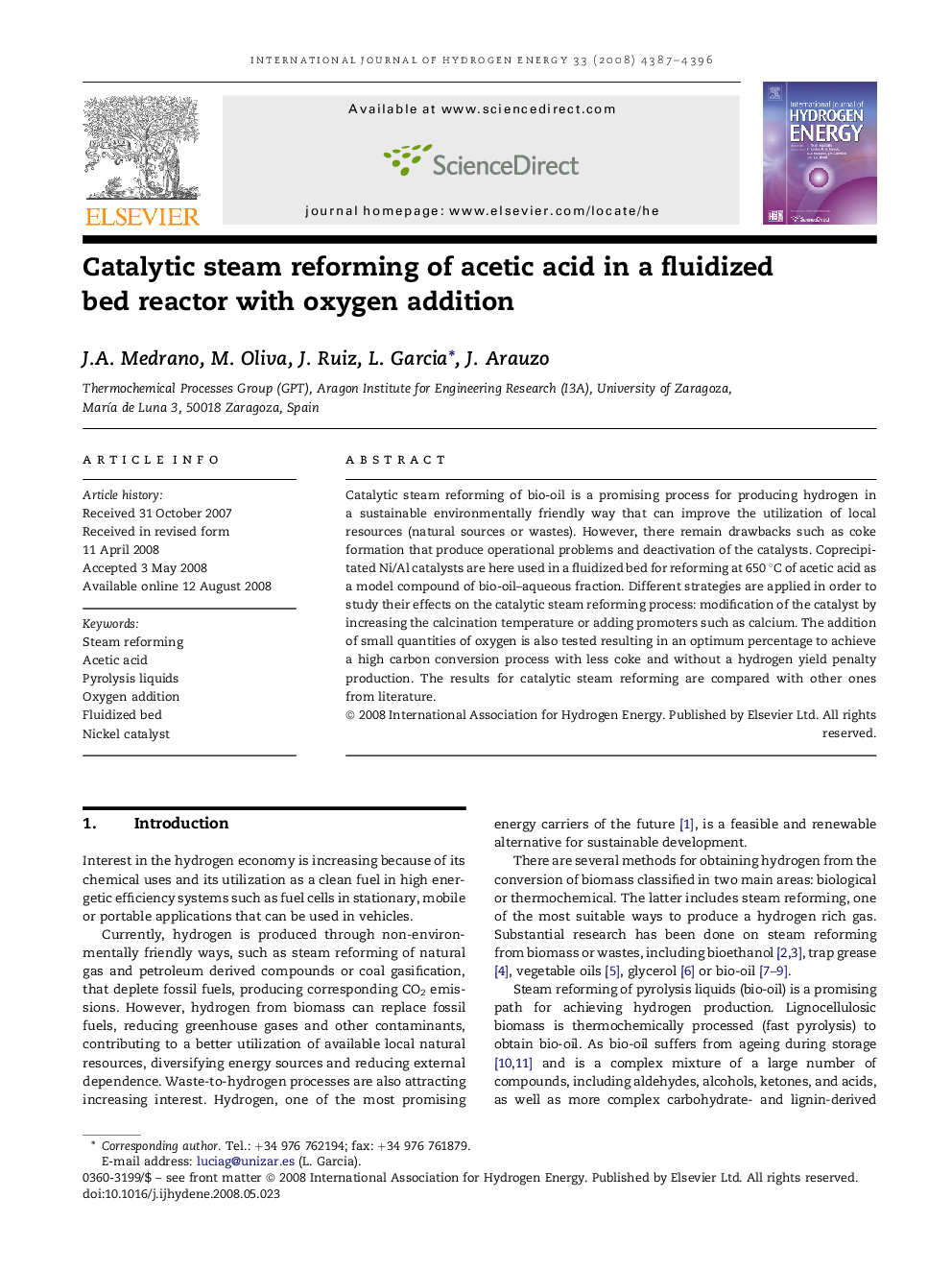| Article ID | Journal | Published Year | Pages | File Type |
|---|---|---|---|---|
| 1278659 | International Journal of Hydrogen Energy | 2008 | 10 Pages |
Catalytic steam reforming of bio-oil is a promising process for producing hydrogen in a sustainable environmentally friendly way that can improve the utilization of local resources (natural sources or wastes). However, there remain drawbacks such as coke formation that produce operational problems and deactivation of the catalysts. Coprecipitated Ni/Al catalysts are here used in a fluidized bed for reforming at 650 °C of acetic acid as a model compound of bio-oil–aqueous fraction. Different strategies are applied in order to study their effects on the catalytic steam reforming process: modification of the catalyst by increasing the calcination temperature or adding promoters such as calcium. The addition of small quantities of oxygen is also tested resulting in an optimum percentage to achieve a high carbon conversion process with less coke and without a hydrogen yield penalty production. The results for catalytic steam reforming are compared with other ones from literature.
